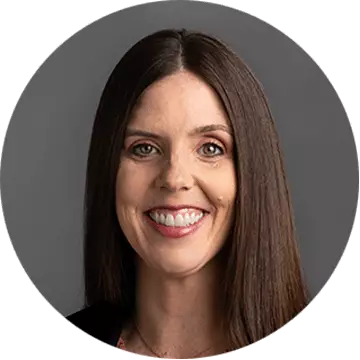What is a finance and technology degree?

Written by¬ÝTrey Edgington

Reviewed by¬ÝKathryn Uhles, MIS, MSP,¬ÝDean, College of Business and IT

Students in a finance and technology degree program explore the ways in which financial services technology, commonly known as fintech, is used to refine financial analysis and planning efforts. This can include accounting, retirement savings strategy, portfolio management and insurance, to name a few topics.¬Ý
Overview of a finance and technology degree program
In a degree program that combines finance and technology, students typically learn about software and mobile applications that simplify financial transactions and management. Initially, fintech described technology banks used to manage customer accounts, but it now encompasses consumer-oriented solutions like budgeting apps, digital payments and online banking. It may also cover tools businesses use to automate financial operations and enhance customer experiences. Practical examples are mobile wallets, digital lending platforms and online-only banks—each illustrating how fintech streamlines traditional financial tasks.
The evolution of financial technology
The fintech industry’s evolution began in the 19th century when Western Union introduced the . However, modern fintech took shape after the 2008 financial crisis. New regulations enabled startups—free from outdated technology—to enter the financial services sector. Initially, fintech companies positioned themselves as competitors to traditional banks, aiming to solve customer frustrations with innovative technology.
Over the past 15 years, this relationship shifted dramatically. Early adopters quickly learned the challenges of competing directly against established banks. Instead, they started to offer complementary services to enhance rather than replace traditional banking. Recent regulatory changes and the rise of open banking have continued to blur the lines between traditional banks and fintech companies, making collaboration more the norm than the exception. For example, correspondent banking relationships—where banks provide infrastructure for fintech solutions—have increased.
Fintech has the capability to expand financial inclusion by giving more people access to banking, payments and credit through digital tools. Mobile apps and online services can help reach underserved communities, potentially making it easier for individuals and small businesses to manage money and build financial stability.
Today, students in a finance and technology degree program learn how financial technology works to meet customer expectations for speed and simplicity. Companies use technologies like AI, blockchain and cloud systems to deliver faster, more reliable services. To stay competitive, these companies need to continually adapt, work with partners and choose the right tech to solve real problems for their customers.
Key components of the fintech ecosystem
The fintech ecosystem has a few key parts working together to deliver faster, simpler financial services. Technology providers build the tools companies utilize, such as artificial intelligence, cloud platforms and blockchain systems. Fintech startups create apps and platforms for services like online payments, digital lending, budgeting and neobanks (which are fintech enterprises that offer digital banking but have no physical locations). They try to solve problems traditional banks don’t always address.
Banks and traditional financial institutions are still commonly used. They either work with financial technology organizations or build their own digital tools to keep up with what customers expect today. Regulators set rules that allow innovation while also protecting customers and the financial system.
What to expect in a finance and technology degree program
In a finance and technology program, students learn how these two areas work together to solve problems in banking, investing, payments and more. They may study accounting, investments, risk management, blockchain, data analysis and cybersecurity. Courses may also focus on practical skills like building financial models, using spreadsheets and understanding digital payment systems.
One goal is to teach students analytical skills to gather insights in financial data and use problem-solving skills to handle real economic challenges. Some programs assign projects and case studies to put theory into practice.
Such courses can also help students develop skills in communication, teamwork and leadership, while exploring the ethics and regulations related to using this technology responsibly.
Potential courses in financial technology
The degree programs typically teach financial concepts and tech skills to students and graduates to help prepare them for careers in the financial technology field. The courses show how money, technology and data work together. Courses may include:
- Digital banking: Learn how online and mobile banking work and how banks keep transactions secure.
- Blockchain basics: Understand blockchain, cryptocurrencies and smart contracts.
- Cybersecurity: Learn how to protect financial data and spot scams.
- Data analysis: Use spreadsheets and charts to find insights in financial data.
- Digital payments: See how payment systems work and how to detect fraud.
- Financial regulations: Know the laws and rules that guide financial technology.
- Investments and risk: Learn how to manage portfolios and reduce financial risk.
- Ethics: Understand data privacy, transparency and how to use technology appropriately.
Interdisciplinary subjects
The programs may also include courses that connect finance, technology and business, so you can see how they work together. Course offerings may include:
- Consumer behavior: How tech changes the way people spend and save..
- Marketing: How to promote digital financial products
- Economics: How new tech affects markets.
- Project management: How to plan and lead fintech projects.
- Information systems: How databases and computer systems support finance.
- Data analytics: How to collect and analyze data to make decisions.
These courses help give students a well-rounded view of financial technology and prepare them to solve real problems in the industry.
Capstone projects and practical applications
Finance and technology degree programs may include capstone projects and hands-on assignments so students can apply what they learn to real problems. In a capstone, students might build financial models, create strategies for digital banking, analyze data to find trends or design plans to improve cybersecurity. The projects let them connect classroom lessons to challenges they may face on the job.
Practical work includes case studies in which students look at real financial situations, group projects where they team up with classmates to solve problems, and simulations that re-create financial environments. These experiences foster critical thinking, teamwork and communication skills—all career-relevant capabilities.
Online programs may use interactive dashboards, virtual collaboration and video calls to make capstone and practical projects engaging and effective, particularly when learning remotely. The projects show that students can use their skills in real situations and help showcase their abilities when applying for fintech jobs.
Skills taught in a typical finance and technology degree program
The programs typically teach financial concepts like accounting, investments, risk management, behavioral finance and international finance. Courses in microeconomics and macroeconomics can help students understand how economic trends affect financial markets—large and small.
Students build technical skills in advanced spreadsheets; automation with formulas and macros; financial data modeling; and data visualization. They may learn about DeFi (decentralized finance) tools, blockchain and cybersecurity to protect financial data and transactions.
Degree programs also typically build analytical skills, enabling students to collect, organize and analyze financial data to make decisions. Students can use such skills to forecast performance, evaluate investments and assess risk.
Programs may also teach problem-solving by having students work on projects where they create solutions for issues like fraud, payment systems or improving financial operations. Online programs often include interactive tools, so students can practice these skills with classmates, on campus or remotely.
Programs may also cover project management, teamwork, leadership and communication. Courses in information systems, security fundamentals and generative AI tools can add to students’ technical knowledge. Classes on ethics and organizational effectiveness can help them handle challenges in business environments. These skills equip graduates to work confidently in the fast-changing fintech industry.
How to choose the right finance and technology program for you
When choosing a program, consider factors like faculty experience, cost, time to completion, and course content that aligns with your career goals.
What to consider when selecting a program
A finance and technology degree should match a student’s career goals. It’s essential to check whether courses cover the skills that financial professionals need after graduation. Consider cost, program length and schedule flexibility.
Online programs typically offer flexible schedules and better tools for interactive learning. Online and asynchronous classes let students balance school with work or family.
Are you ready to get started on your finance and technology degree?
Are you interested in this type of degree but need a program that can accommodate your busy schedule? ∆þ…´ ”∆µ offers a finance and technology degree program that is flexible. Request more information by contacting an enrollment representative.

ABOUT THE AUTHOR
Trey Edgington holds a Master of Arts in creative writing from the University of North Texas, and his short fiction has been published in several literary journals. His professional journey also includes more than 15 years of experience in higher education and healthcare marketing. Over the course of his career, he has held such roles as adjunct instructor of English, senior content editor & writer, and content and SEO manager. Most recently, he has taken on the role of generative AI language consultant.

ABOUT THE REVIEWER
Christina Neider is the associate provost of colleges and former dean of the ∆þ…´ ”∆µ College of Social and Behavioral Sciences.¬ÝNeider‚Äôs career spans more than 30 years in academia, healthcare and the U.S. Air Force. She has held several academic leadership roles at ∆þ…´ ”∆µ, and she is the Vice President of membership for the Arizona Chapter of the Healthcare Information and Management Systems Society.
This article has been vetted by ∆þ…´ ”∆µ's editorial advisory committee.¬Ý
Read more about our editorial process.





